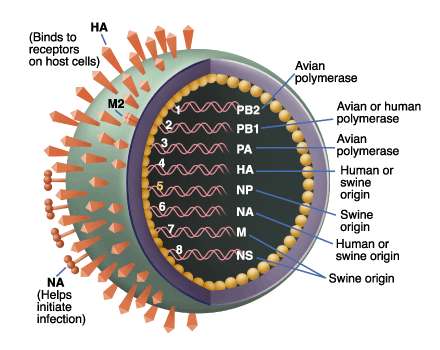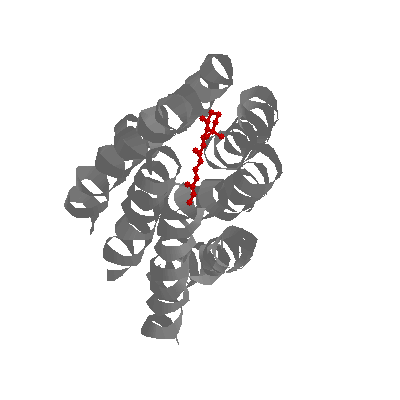Chem 227 : Assignments / Activities
Activity 5 (Worksheet)
- Aromaticity |
Activity 6 (Worksheet)
- Electrophilic Aromatic Subs. |
|
Activity 7 (Worksheet) - Nucleophilic Aromatic
Subs. |
||
Library Research / Calibrated Peer Review (CPR)
LABORATORY
Reading / Homework:
Key Topics are emphasized in Bold Red. Homework problems will serve as examples for some of the types of questions that will be on exams and quizzes. (Most all of the textbook problems are included. There are only a few selected ones that are omitted. If you don't care to rationalize which are which from the lists that follow you can simplify the process by doing them all.)
Chapter:
13. Mass Spectrometry and Infrared Spectroscopy.Mass Spectrometry. The Mass Spectrum. Fragmentation. Isotopes in Mass Spectrometry. Determination of Molecular Formulas: High-Resolution Mass Spectrometry. Fragmentation at Functional Groups. Spectroscopy and the Electromagnetic Spectrum. Infrared Spectroscopy. Infrared Absorption Bands. Intensity of Absorption Bands. Position of Absorption Bands. C-H Absorption Bands. Shape of Absorption Bands. Absence of Absorption Bands. Infrared Inactive Vibrations. Identifying Infrared Spectra. Ultraviolet and Visible Spectroscopy. The Beer-Lambert Law. Effect of Conjugation on <F128>lmax. The Visible Spectrum and Color. Uses of UV/Vis Spectroscopy.
Problems: 1-5,8-20,8-29,32,33a,34,41-47,50,51,54
14. NMR Spectroscopy.Introduction to NMR Spectroscopy. Fourier Transform NMR. Shielding. The Number of Signals in the 1H NMR Spectrum. The Chemical Shift. The Relative Position of 1H NMR Signals. Characteristic Values of Chemical Shifts. Integration of the NMR Signals. Diamagnetic Anisotropy. Splitting of the Signals. More Examples of 1H NMR Spectra. Coupling Constants. Splitting Diagrams. Time Dependence of NMR Spectroscopy. Protons Bonded to Oxygen and Nitrogen. Use of Deuterium in 1H NMR Spectroscopy. Resolution of 1H NMR Spectra. 13C NMR Spectroscopy. DEPT 13C NMR Spectra. Two-Dimensional NMR Spectroscopy. Magnetic Resonance Imaging.
Problems: 3-7,9-32, 34-54,57,58,60-62,64,67,69,-73
V. AROMATIC COMPOUNDS.
15. Aromaticity& Reactions of Benzene.Criteria for Aromaticity. Aromatic Hydrocarbons. Aromatic Heterocyclic Compounds. Some Chemical Consequences of Aromaticity. Antiaromaticity. A Molecular Orbital Description of Aromaticity and Antiaromaticity. Nomenclature of Monosubstituted Benzenes. How Benzene Reacts. General Mechanism for Electrophilic Aromatic Substitution Reactions. Halogenation of Benzene. Nitration of Benzene. Sulfonation of Benzene. Friedel-Crafts Alkylation of Benzene. Friedel-Crafts Alkylations of Benzene. Alkylations of Benzene by Acylation-Reduction.
Problems: 1,2,4-11,15-38
16. Reactions of Substituted Benzenes.Nomenclature of Diubstituted and Polysubstituted Benzenes. Reactions of Substituents on Benzene. The Effect of Substituents on Reactivity. The Effect of Substituents on Orientation. The Effect of Substituents on pK a. The Ortho/Para Ratio. Additional Considerations Regarding Substituent Effects. Designing a Synthesis III: Synthesis of Monosubstituted and Disubstituted Benzenes. Synthesis of Trisubstituted Benzenes. Synthesis of Substituted Benzenes Using Arenediazonium Salts. The Arenediazonium Ion as an Electrophile. Mechanism for the Reaction of Amines with Nitrous Acid. Nucleophilic Aromatic Substitution Reactions. Benzyne. Polycyclic Benzenoid Hydrocarbons. Electrophilic Substitution Reactions of Naphthalene and Substituted Naphthalenes.
Problems: 1-3,5,7,8,10-18,20,22,28-34,38-48,50-58,61-63,67
VI. CARBONYL COMPOUNDS.
17. Carbonyl Compounds I: Nucleophilic Acyl Substitution.Nomenclature. Structures of Carboxylic Acids and Carboxylic Acid Derivatives. Physical Properties of Carbonyl Compounds. Naturally Occurring Carboxylic Acids and Carobxylic Acid Derivatives. How Class I Carbonyl Compounds React. Relative Reactivities of Carboxylic Acids, Acyl Halides, and Carboxylic Acid Derivatives. General Mechanism for Nucleophilic Acyl Substitution Reactions. Reactions of Acyl Halides. Reactions of Acid Anhydrides. Reactions of Esters. Acid-Catalyzed Ester Hydrolysis. Hydroxide-Ion-Promotes Ester Hydrolysis. Soaps, Detergents, and Micelles. Reactions of Carboxylic Acids. Reactions of Amides. Acid-Catalyzed Hydrolysis of Amides. Hydrolysis of an Imide- The Gabriel Synthesis. Hydrolysis of Nitriles. Designing a Synthesis IV: The Synthesis of Cyclic Compounds. Synthesis of Carboxylic Acid Derivatives. Dicarboxylic Acids and Their Derivatives.
Problems: Do all as time allows.
18. Carbonyl Compounds II: Nucleophilic Acyl Addition, Nucleophilic Acyl Substitution, and Nucleophilic Addition-Elimination—Reactions of <F128>a, <F128>b-Unsaturated Carbonyl Compounds.Nomenclature. Relative Reactivities of Carbonyl Compounds. How Aldeyhdes and Ketones React. Reactions of Carbonyl Compounds with Carbon Nucleophiles. Reactions of Carbonyl Compounds with Hydride Ion. Reactions of Aldehydes and Ketones with Nitrogen Nucleophiles. Reactions of Aldehydes and Ketones with Oxygen Nucleophiles. Protecting Groups. Addition of Sulfur Nucleophiles. The Wittig Reaction. Stereochemistry of Nucleophilic Addition Reactions: Re and Si Faces. Designing a Synthesis V: The Synthesis of Cyclic Compounds. Nucleophilic Addition to -Unsaturated Aldehydes and Ketones: Direct Addition Versus Conjugate Addition. Nucleophilic Addition to <F128>a, <F128>b-Unsaturated Carboxylic Acid Derivatives. Enzyme-Catalyzed Additions to <F128>a, <F128>b-Unsaturated Carbonyl Compounds.
Problems: Do all as time allows.
19. Carbonyl Compounds III: Reactions at the <F128>a-Carbon.Acidity of <F128>a-Hydrogens. Keto-Enol Tautomerism. How Enols and Enolate Ions React. Halogenation of the <F128>a-Carbon of Aldehydes and Ketones. Halogenation of the <F128>a-Carbon of Carboxylic Acids: The Hell-Volhard-Zelinski Reaction. <F128>a-Halogenated Carbonyl Compounds in Synthesis. Using LDA to Form an Enolate. Alkylation of the <F128>a-Carbon of Carbonyl Compounds. Alkylation and Acylation of the <F128>a-Carbon via an Enamine Intermediate. Alkylation of the <F128>b-Carbon: The Michael Reaction. The Aldol Addition. Dehydration of Aldol Addition Products: Formation of <F128>a, <F128>b-Unsaturated Aldehydes and Ketones. The Mixed Aldol Addition. The Claisen Condensation. The Mixed Claisen Condensation. Intramolecular Condensation and Addition Reactions. Decarboxylation of 3-Oxocarboxylic Acids. The Malonic Ester Synthesis: Synthesis of Carboxylic Acids. The Acetoacetic Ester Synthesis: Synthesis of Methyl Ketones. Designing a Synthesis VI: Making New Carbon-Carbon Bonds. Reactions at the <F128>a-Carbon in Biological Systems.
Problems: Do all as time allows.
VII. BIOORGANIC COMPOUNDS.
20. More About Oxidation-Reduction Reactions.Reduction Reactions. Oxidation of Alcohols. Oxidation of Aldehydes and Ketones. Oxidation of Alkenes with Peroxyacids. Hydroxylation of Alkenes. Oxidative Cleavage of 1,2-Diols. Oxidative Cleavage of Alkenes: Ozonolysis. Oxidative Cleavage of Alkynes. Designing a Synthesis VII: Functional Group Interconversion. Biological Oxidation-Reduction Reactions. Oxidation of Hydroquinones/Reduction of Quinones.
Problems: Do all as time allows.
21. More about Amines& Heterocyclic Compounds.More About Nomenclature. More About Acid-Base Properties. Amine Inversion. Synthesis of Amines. Reactions of Amines. Reactions of Quaternary Ammonium Compounds. Phase-Transfer Catalysis. Unsaturated Five-Membered-Ring Heterocycles. Unsaturated Six-Membered-Ring Heterocycles. Biologically Important Heterocycles.
Problems: Do all as time allows.
22. Carbohydrates.Classification of Carbohydrates. The D and L Notation. Configurations of the Aldoses. Configurations of the Ketoses. Redox Reactions of Monosaccharides. Osazone Formation. Chain Elongation: The Kiliani-Fischer Synthesis. Chain Shortening: The Ruff Degradation. Stereochemistry of Glucose: The Fischer Proof. Cyclic Structure of Monosaccharides: Hemiacetal Formation. Stability of Glucose. Acylation and Alkylation of Monosaccharides. Formation of Glycosides. The Anomeric Effect. Reducing and Nonreducing Sugars. Determination of Ring Size. Disaccharides. Polysaccharides. Some Naturally Occurring Products Derived from Carbohydrates. Carbohydrates on Cell Surfaces. Synthetic Sweeteners.
Problems: Do all that relate to reading as time allows.
23. Amino Acids, Peptides, and Proteins.Classification and Nomenclature of Amino Acids. Configuration of Amino Acids. Acid-Base Properties of Amino Acids. The Isoelectric Point. Separation of Amino Acids. Resolution of Racemic Mixtures of Amino Acids. Peptide Bonds and Disulfide Bonds. Some Interesting Peptides. Strategy of Peptide Bond Synthesis: N-Protection and C-Activation. Automated Peptide Synthesis. Protein Structure. Determining the Primary Structure of a Protein. Secondary Structure of Proteins. Tertiary Structure of Proteins. Quaternary Structure of Proteins. Protein Denaturation.
Problems: Do all as time allows.
24. Catalysis.Catalysis in Organic Reactions. Nucleophilic Catalysis. Acid Catalysis. Base Catalysis. Metal-Ion Catalysis. Intramolecular Reactions. Intramolecular Catalysis. Catalysis in Biological Reactions. Enzyme-Catalyzed Reactions. Catalytic Antibodies and Artificial Enzymes.
25. The Organic Mechanisms of the Coenzymes—Metabolism.Overall View of Metabolism. Niacin: The Vitamin Needed for Many Redox Reactions. Flavin Adenine Dinucleotide and Flavin Mononucleotide: Vitamin B2. Thiamine Pyrophosphate: Vitamin B1. Biotin: Vitamin H. Pyridoxal Phosphate: Vitamin B6. Coenzyme B12: Vitamin B12. Tetrahydrofolate: Folic Acid. Vitamin KH2: Vitamin K.
VIII: SPECIAL TOPICS IN ORGANIC CHEMISTRY.
26. Lipids.Fatty Acids. Waxes. Fats and Oils. Membranes. Prostaglandins. Terpenes. Vitamin A. Biosynthesis of Terpenes. Steroids. Biosynthesis of Cholesterol. Synthetic Steroids.
Problems: Do all as time allows.
27. Nucleosides, Nucleotides, and Nucleic Acids I.Nucleosides and Nucleotides. ATP: The Carrier of Chemical Energy. Three Mechanisms for Phosphoryl Transfer Reactions. The “High-Energy” Character of Phosphoanhydride Bonds. Kinetic Stability of ATP in the Cell. Other Important Nucleotides. The Nucleic Acids. Helical Forms of DNA. Biosynthesis of DNA: Replication. Biosynthesis of Messenger RNA: Transcription. Ribosomal RNA. Transfer RNA. Biosynthesis of Proteins: Translation. Why DNA Contains Thymine Instead of Uracil. Determining the Base Sequence of DNA. Laboratory Synthesis of DNA Strands. Rational Drug Design.
Problems: Do all as time allows.
28. Synthetic Polymers.General Classes of Synthetic Polymers. Chain-Growth Polymers. Stereochemistry of Polymerization. Ziegler-Natta Catalysts. Polymerization of Dienes. The Manufacture of Rubber. Copolymers. Step-Growth Polymers. Physical Properties of Polymers. Biodegradable Polymers.
Problems: Do all as time allows.
29. Pericyclic Reactions.Three Kinds of Pericyclic Reactions. Molecular Orbitals and Orbital Symmetry. Electrocyclic Reactions. Cycloaddition Reactions. Sigmatropic Rearrangements. Pericyclic Reactions in Biological Systems. Summary of the Selection Rules for Pericyclic Reactions.
30. The Organic Chemistry of Drugs: Discovery and Design.Naming Drugs. Lead Compounds. Molecular Modification. Random Screening. Serendipity in Drug Development. Receptors. Drugs as Enzyme Inhibitors. Designing a Suicide Substrate. Quantitative Structure-Activity Relation-ships (QSAR). Molecular Modeling. Combinatorial Organic Synthesis. Antiviral Drugs. Economics of Drugs. Governmental Regulations.




















